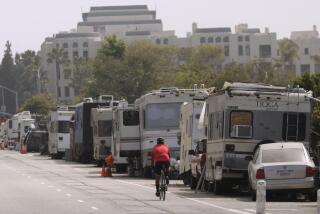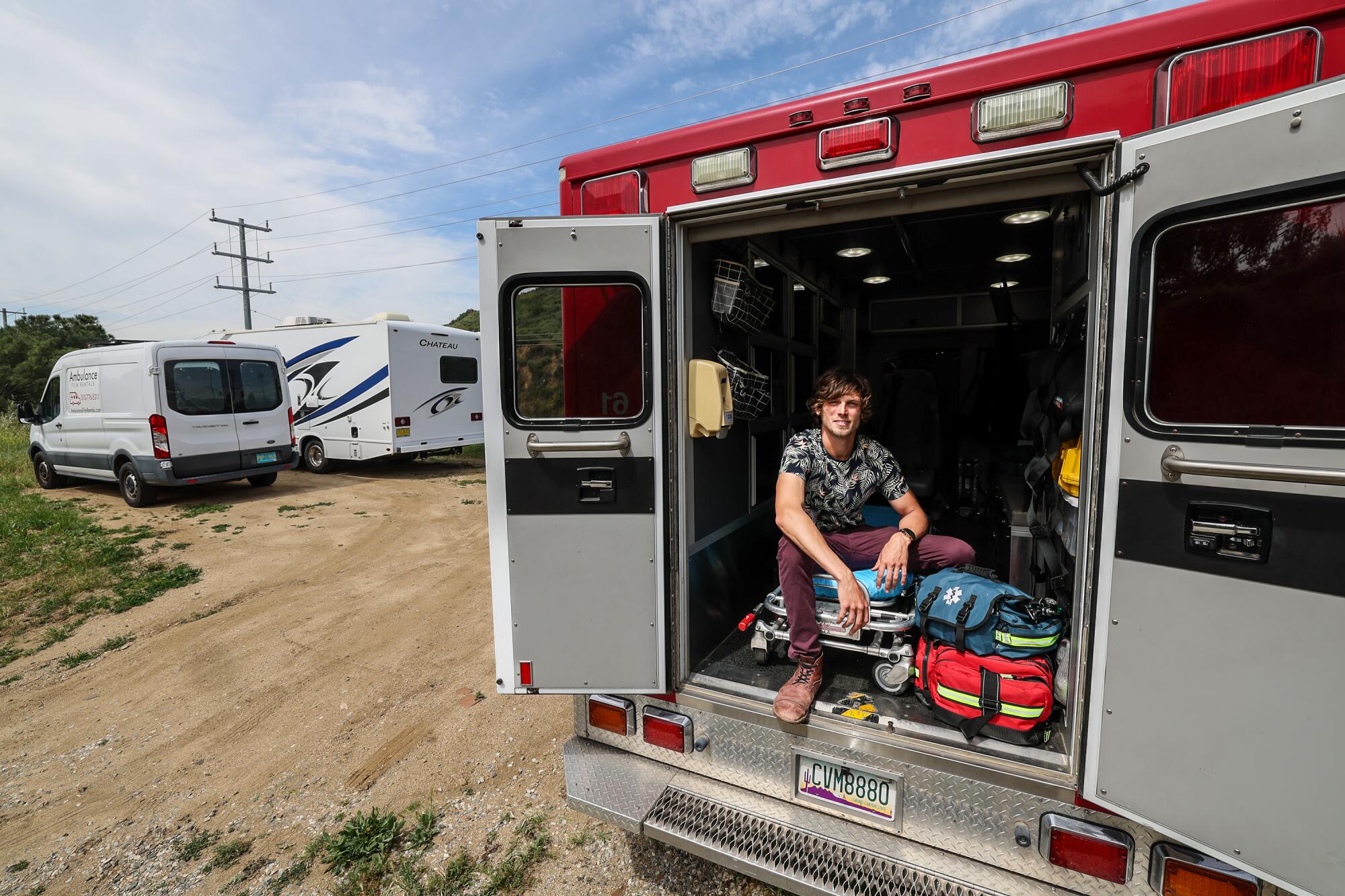
After a hard day’s work, Cameron Gordon sometimes finds a bit of solace as he lounges on the gurney in his yard, surveying a patchwork of weeds, potted plants, garden beds and a hose that meanders across the dirt.
This is where his struggle to navigate the housing crisis has left him: living by day on an 18,000-square-foot lot in Sun Valley, pulling weeds, watering trees — and then leaving at night as he searches for a safe place to sleep.
Gordon’s strange — and quintessentially L.A. —odyssey started when he found he couldn’t afford an apartment and came to realize a home was whatever you can squeeze into.
A studio. An accessory dwelling unit. A camper.
Gordon bought an ambulance.
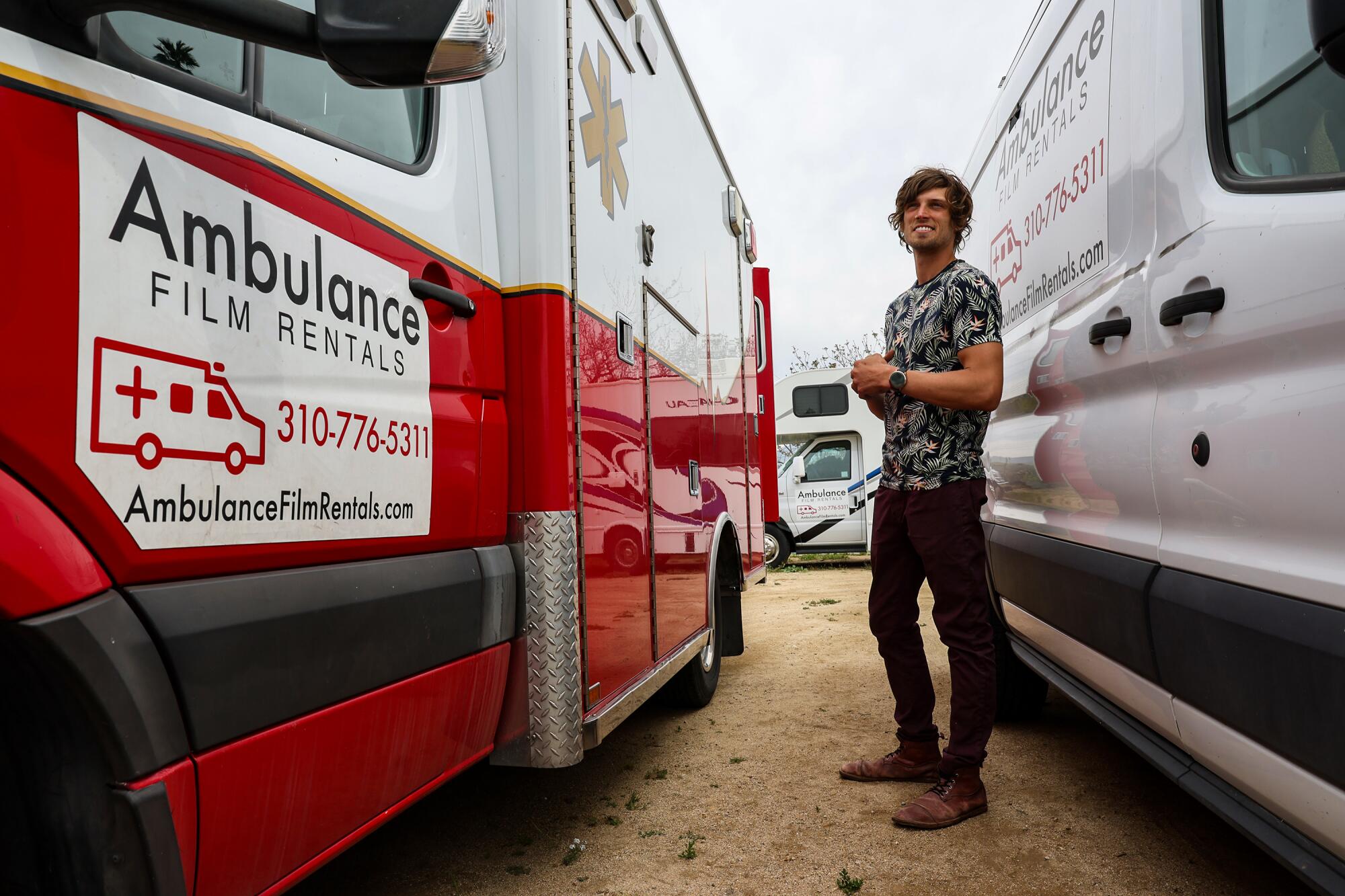
Emblazoned with bright red paint, his boxy service vehicle has found a new purpose after being decommissioned. Storage shelves once lined with trauma kits now hold cooking utensils. The bench has been turned into a bed. So, if you see Gordon winding through the city, he’s not transporting a victim. He’s avoiding a parking ticket.
“It works for my lifestyle,” he said. “It has thick walls, [and] good insulation for the weather. I’d rather live for free in my ambulance than pay for a house I can’t afford. That’s what it actually means to be stuck.”
Gordon may actually be one step ahead of stuck, as he plots an uncanny journey from the fringes of Los Angeles to a path to homeownership.
But the path is still littered with obstacles.
::
Gordon, 30, moved here from Texas in 2018, arriving the way many do: with wide eyes and shallow pockets. He drove out for a songwriting convention in Hollywood and realized it’d be cheaper to sleep in his car than pay for a hotel room.
“I thought I was so smart. Like I’d invented sleeping in your car,” Gordon said.
He planned to spend only a few weeks here, but when the conference was over, he just stayed. A few weeks in, he drove past a downtown parking lot full of ambulances. Crammed into his car, he looked into buying one to live in. At a bankruptcy auction a few days later, he spent his life savings — $15,000 from his days as a roofer — on three ambulances.
Two of them were lemons, requiring more work to fix than he’d anticipated, but the third was good enough to drive around and sleep in. He spent his afternoons parked on city streets and playing guitar in his newly fashioned home, and one day a director approached him to ask whether the ambulance was a film car. He was hoping to rent it for an upcoming project.
Gordon’s business model immediately took shape: Sleep in the ambulance at night and rent it out to film and television shoots during the day. He bought a domain name — ambulancefilmrentals.com — and quickly mastered the art of search engine optimization. If you Google “ambulance rental,” Gordon’s site will be among the top results.
“I called every ambulance rental company in North America pretending to be a movie producer and asked for their rates to see how much I should charge. Then I made a spreadsheet and gave it to clients to pretend like I knew what I was doing,” Gordon said.
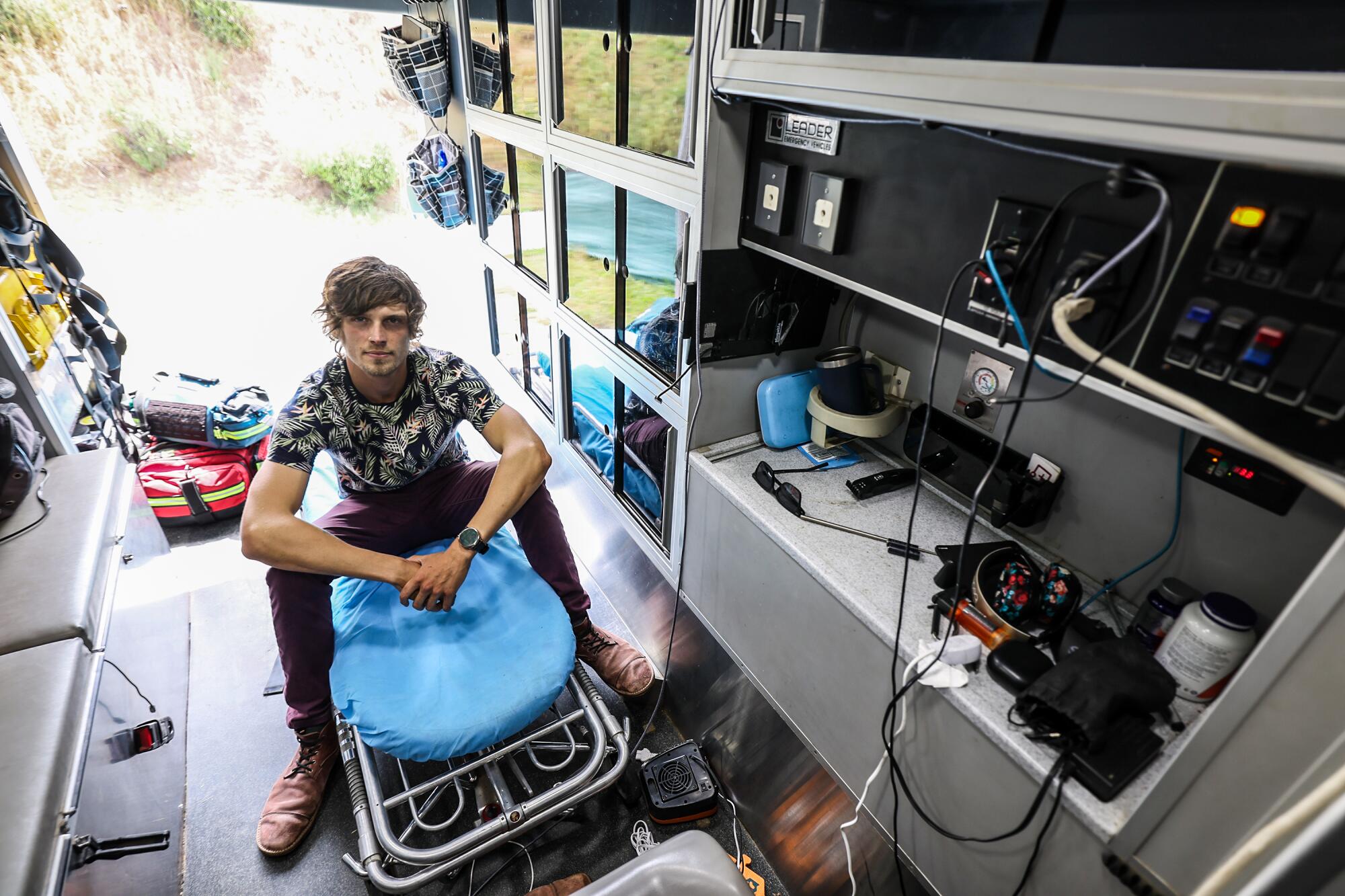
The business quickly took off as he rented his ambulance to multiple films including “The Gray Man” starring Ryan Gosling and “Doula” with Chris Pine. Today, he charges $1,100 to $1,400 per day and even offers himself as an actor if the project needs an ambulance driver.
“It can be a package deal: the ambulance and the driver,” he said. “I even bought an EMT outfit.”
Gordon spent the first few months of ambulance life popping around beach communities: Venice, Santa Monica, Playa del Rey. But the city of Los Angeles prohibits storing vehicles on public streets. Cars parked for more than 72 hours risk being ticketed or towed, even if there are no signs posted. So Gordon kept moving.
Eventually, he discovered a dog park in Valley Village without any signs prohibiting parking for a certain amount of time, so he’d post up there, playing guitar, practicing yoga and chatting up the locals. At night, he’d park the ambulance in the surrounding neighborhoods, always driving away by morning to avoid annoying the residents.
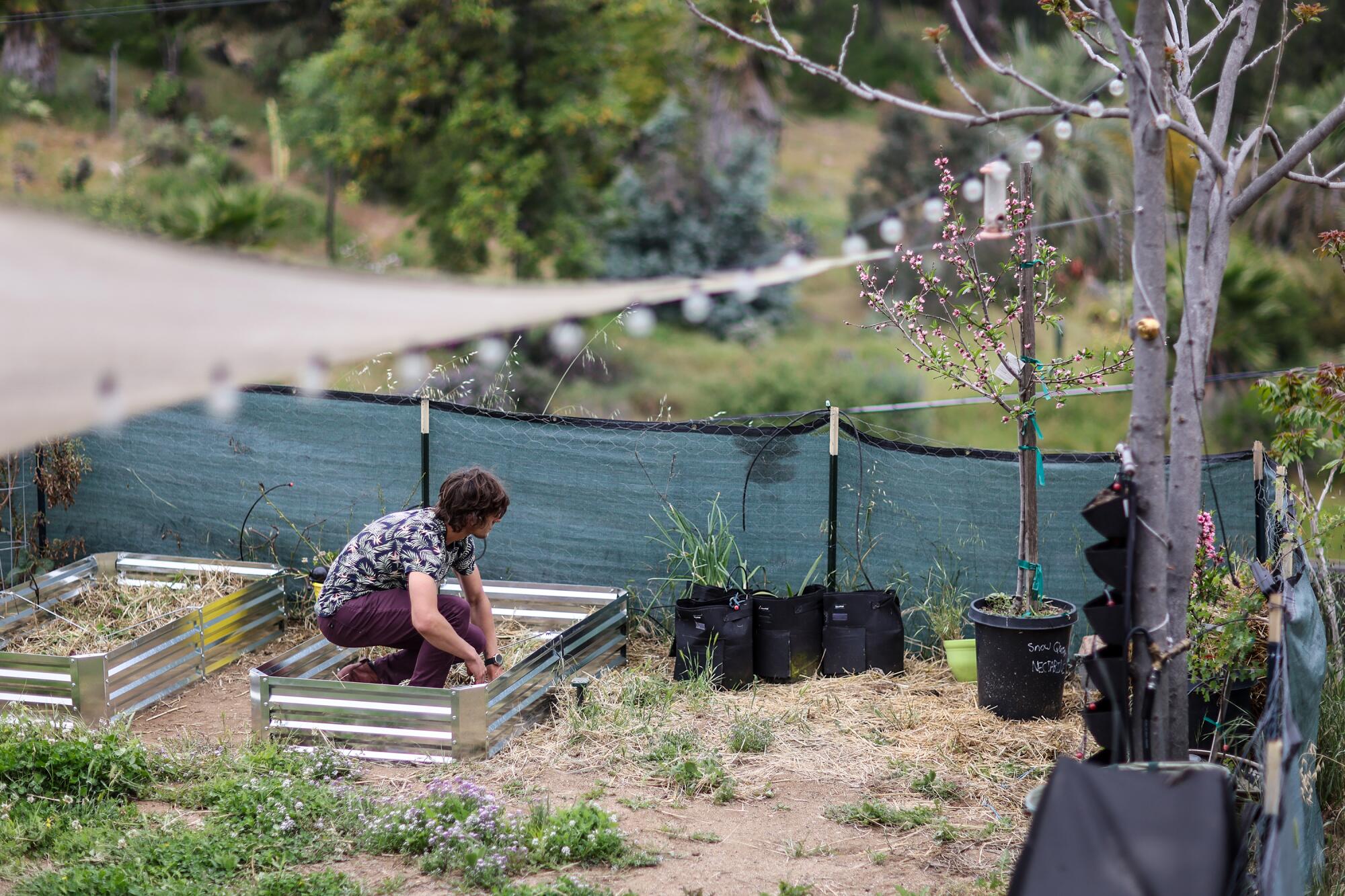
Gordon is affable and easygoing, hugging his visitors and laughing during every conversation. He’s quick to crack a joke while describing his often-tenuous living situations. At the dog park, he turned strangers into fast friends, joining regulars for dinner and even serving as a pallbearer at one of their funerals.
“It’s not for everyone, but it’s a good life. I sleep in my car, meet up with friends for adventures and avoid the weight of bills and finances,” he said. “Carefree. Stress-free.”
::
Gordon is one of thousands of people living in a vehicle in Los Angeles County. In 2023, the Los Angeles Homeless Services Authority estimated there were 3,918 cars, 3,364 vans and 6,814 RVs being used as a dwelling — 14,096 vehicles and 9% higher than the year before. It’s a trend the city of Los Angeles is keeping a close eye on. Last year, Mayor Karen Bass told The Times, “We have not resolved the RV issue yet. But we absolutely will because it’s a very serious issue.”
Solutions are elusive. Two years ago, the L.A. City Council lifted a moratorium on towing oversize vehicles used as homes, but the city doesn’t have enough trucks capable of removing RVs or enough space to store them.
What’s more, RVs — and ambulances — are mobile. If a vehicle is parked illegally, it can simply drive away when city officials show up.
With money flowing in from his rental business and no rent to pay, Gordon invested heavily in stocks and cryptocurrency. When the market boomed during the COVID-19 pandemic, he found himself with just enough money to buy an empty piece of land in Sun Valley for $65,000 in 2022.
The plot was zoned as RE40, a residential designation. But since there was no house on it, he couldn’t officially live there.
But Gordon had a plan: He would eventually build a home on the property and park his ambulance on it in the meantime. He regarded his purchase as a legitimate move toward homeownership and a way to get himself off the streets at night.
He vowed to tackle the problems — the lack of a house; that the lot was far too hilly to build on; that he can’t legally sleep on a property that doesn’t have a certificate of occupancy — as they came.
::
A year after he bought the property, the actors’ strike began, shutting down the film industry for roughly four months. Gordon found himself without an income.
So he spent his days working the land.
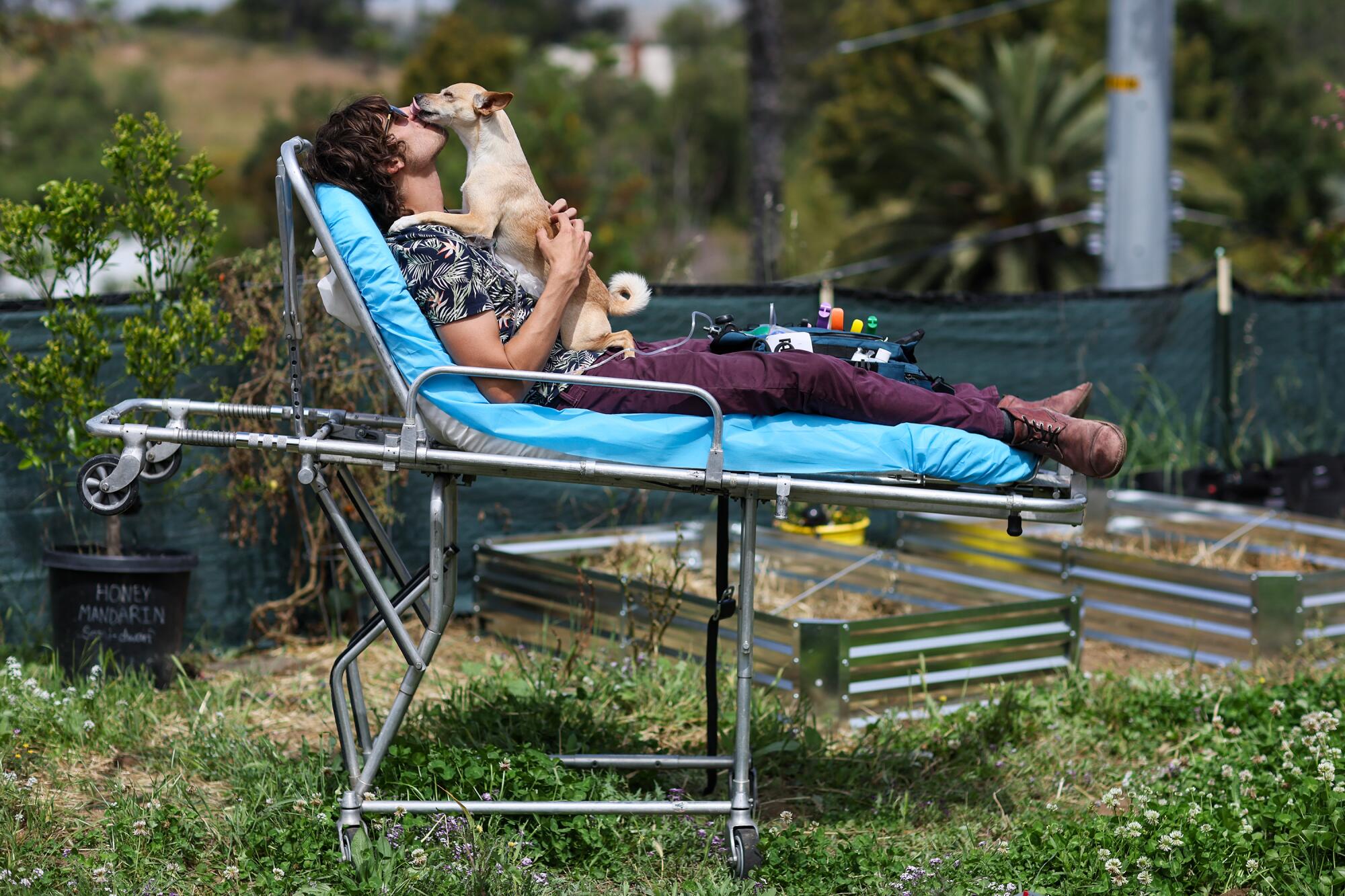
He first flattened the hillside lot, breaking up dirt with a pickax and moving it until it was even enough to plant trees and park his ambulance. The process took months.
“I’d wake up, work, eat, talk to my neighbors, work more and then sleep,” he said.
Then the fines started to roll in.
The Los Angeles Municipal Code prohibits occupying vacant land without a certificate of occupancy, and L.A. County also prohibits recreational vehicles from being occupied as a residence on any private property, according to the Department of Regional Planning.
Since Gordon was working and storing his belongings on the property, he quickly racked up fees, noncompliance issues and inspector visits regarding open-air storage of his stuff and unauthorized RV storage.
“You’re met with resistance when you try to upgrade your life,” Gordon said. “The moment you have any money, the city tries to take it.”
So Gordon dug into the Municipal Code and found a loophole.
The section of the code that outlines certificates of occupancy says, “No vacant land shall be occupied or used, except for agricultural uses.”
If he used the land agriculturally, he’d be allowed to store equipment there and stave off the string of fines. So he planted apple trees, nectarine trees, grape vineyards and a vegetable garden, turning the once-empty lot into an oasis.
He also set up an outdoor lounge — a shade structure, as it’s defined in the Municipal Code — with string lights and a pop-up gazebo. Solar panels charge a battery that he uses for electricity, which runs appliances such as a pan, kettle and small refrigerator. He stashes a portable toilet in the ambulance.
On days when he’s not renting out the ambulance, he spends time farming, smoking weed and enjoying the fruits of his labor. The hillside plot takes in sweeping views of the surrounding mountains. The gurney that rolls out of the ambulance makes for an excellent chaise longue.

At night, he drives off. It’s legal for him to work on the land, but not live on it full time.
His latest inspection went well; the city approved his setup. After paying around $1,500 in fines and inspection fees over the last two years, they finally stopped rolling in.
Gordon is happy with the strange life he’s built for himself; he maintains the property with his girlfriend, Susie, and their two dogs, Brody and Gizmo. The next step will be obtaining building permits and site plans, which will bring its own set of hurdles.
“I just want to take it at my own pace. I want to build a house when my business grows and it becomes manageable,” he said. “Until then, I don’t want someone knocking on my door every month with a $300 fee.”
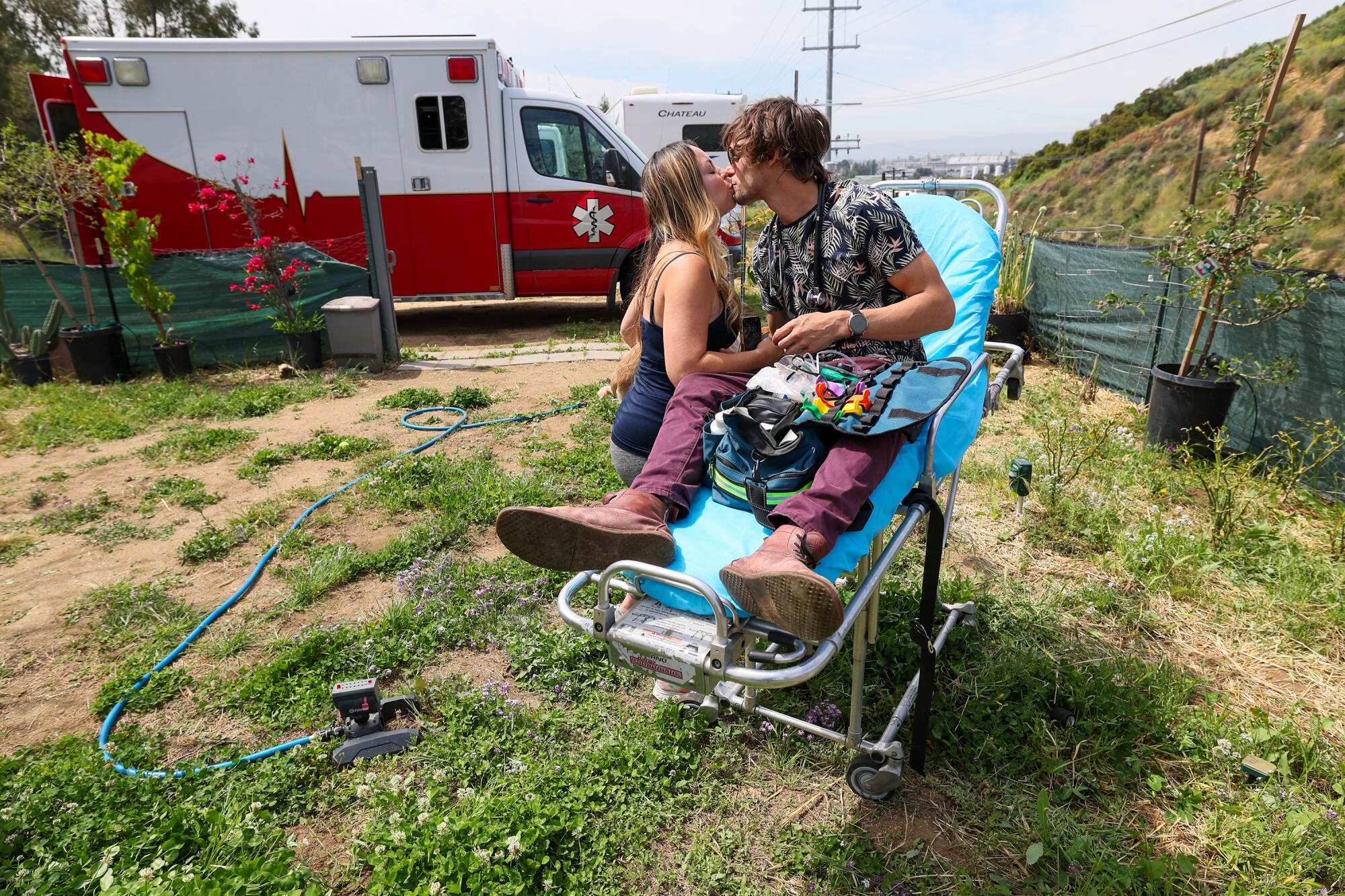
He sees himself as many Angelenos do: in the gray area between homeless and homeowner. Enough money to get by, but not enough to ever have the picture-perfect California single-family home. One more person with a dream of putting down roots in one of the priciest real estate markets in the country.
“I can’t buy a million-dollar home, but I can buy a $100,000 piece of land,” he said. “I just need to figure out where to go from there.”
More to Read
Sign up for This Evening's Big Stories
Catch up on the day with the 7 biggest L.A. Times stories in your inbox every weekday evening.
You may occasionally receive promotional content from the Los Angeles Times.

